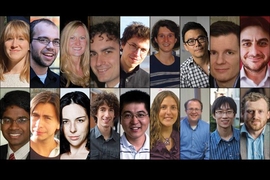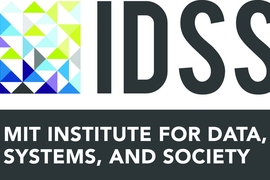Guy Bresler joined the MIT faculty in September 2015 as the Bonnie and Marty (1964) Tenenbaum Career Development Professor in the Department of Electrical Engineering and Computer Science (EECS). He also joined the Institute for Data, Systems, and Society (IDSS) — which addresses complex societal challenges by advancing education and research at the intersection of statistics, data science, information and decision systems, and social sciences — as a member of the Laboratory for Information and Decision Systems (LIDS).
Bresler’s research investigates the relationship between combinatorial structure and computational tractability of high-dimensional inference in graphical models and other statistical models. His current work focuses on learning graphical models from data, and explores how both data and computation requirements can be reduced if the model is subsequently used for a specific inference task. Bresler is also interested in applications of these methods, especially to recommendation systems and computational biology.
Bresler spoke with IDSS about some of his work and his perspective on being part of both LIDS and IDSS.
Q: You describe your research interests in largely theoretical terms — combinatorial structure, computational tractability, high-dimensional inference. How would you explain your work to those not in the field?
A: The basic question in most of machine learning and much of statistics is: How do you come up with a good model for some phenomenon you’re observing? There are a lot of models out there and a lot of complicated phenomena. Learning more complicated models generally requires more data. As I get more data, can I get a better sense of what’s a good model within a given class?
The problem with very complex models is that learning requires too much data. The idea is that if you have some intuition about what the right model is for what you’re observing, you can narrow things down. One type of model I’ve been interested in is graphical models. The concept of "graph" is pretty basic to a lot of the things I’m interested in. In a graphical model you have a bunch of points representing variables and some of them interact so you draw an edge, or line, between them, and some of them aren’t connected. When learning the model, the goal is to understand what’s influencing what. Such graphs can represent many things, among them social networks, for example, or gene regulatory networks.
Q. It sounds like you do a lot of theoretical work that you can then apply to different things. Are you working on particular applications right now?
A: I’m interested in several different application domains. One application domain I’m getting more involved in now is genomics. You want to predict, for example: If I knock out this gene in your DNA sequence, what effect is that going to have on the expression of these other genes? In order to make such a prediction, one can first learn a model for how these genes are interacting, and that’s done from data. Certain types of graphical models seem fairly well suited to this problem.
The basic causal prediction question comes up everywhere, and the hope is to come up with statistical methodology that is as universally applicable as possible. It’s useful to try and focus on one application at first, and actually validate things experimentally. Part of this genomics work we’re just starting now with Caroline Uhler [in EECS], Philippe Rigollet [in the Department of Mathematics], Jon Kelner [in the Department of Mathematics], and Aviv Regev [in the Department of Biology]. Aviv Regev’s lab can do single-cell experiments where we can knock out genes or change the expression of the one gene. So we can take it full cycle: learn models from a bunch of data that only she can produce for us using statistical methodology that we’ll develop, and then we can then go validate to see: Did we do a good job?
Q: Why did you choose to make LIDS and IDSS your intellectual home?
A: LIDS is a wonderful place where people have a lot of freedom to think about challenging and interesting problems. It has this great combination of scholarship coupled with drive and curiosity; a great mix of theoretical work with engineering and systems motivation. It’s definitely a place where I feel really happy.
And IDSS — It’s super exciting what’s happening. There’s a steadily growing critical mass of people working on related questions, which creates a lot of energy. This builds on MIT’s heritage and strength in areas such as computation and control theory. For instance, [IDSS faculty member] Philippe Rigollet’s work has helped change the way we think about some statistical problems and how they interplay with computational questions. To me certainly that’s one of the most exciting things: how much interaction there is already and I think will continue to be between statistics and other fields.
Q. Is the policy and social science aspect of IDSS of interest to you?
A: I think having social science be part of IDSS is fantastic. If everybody is a theoretician it’s possible to get a bit detached from the real world, so it’s crucial to have domain areas where we want to make a big impact and IDSS is doing this. But even purely from the theoretical point of view, many interesting theoretical questions are motivated by practical constraints.
So I think that in terms of having impact on the world, there’s a lot of potential to do that with the right mix of people at IDSS. It’s something that may be more difficult within a single department; it’s harder to bring together that group of people from different backgrounds. Trying to have a big positive impact on the world, it’s awesome to have this as one of the driving visions of IDSS.
Q: What is something non-academic you do to take a break from your research?
A: My non-academic obsession is rock and alpine climbing. I do other mountain sports too, like mountain biking and skiing, but climbing is different. When I go on a trip and spend time in a truly wild place, above the clouds on some distant mountain, it’s really special. Those are some of the moments that I feel most alive.









